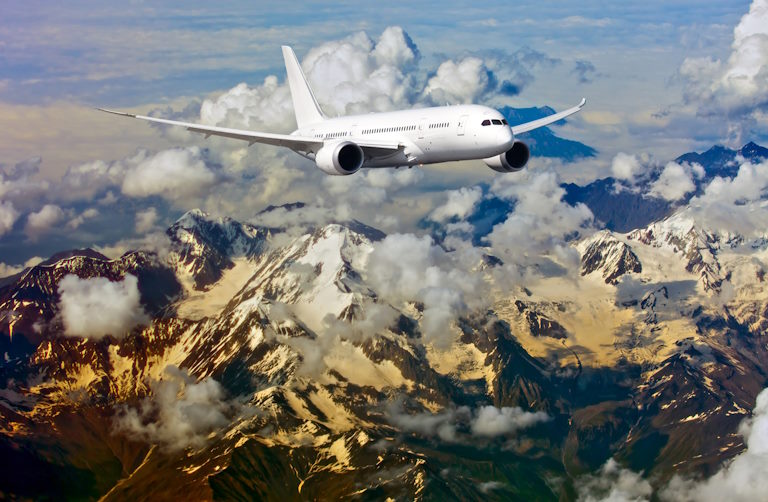Is Turbulence Dangerous? What Passengers Need to Know
The recent incidents of severe turbulence on flights have highlighted how bad the impact can be, but it’s worth remembering that such cases are rare. Sarah Thomas explains the causes and risks of turbulence.
 Photo © Getty Images / AlexeyPetrov
Photo © Getty Images / AlexeyPetrov
Anyone who’s undertaken air travel knows that turbulence is par for the course. A few bumps, a reassuring message from the captain with a request for everyone to fasten seatbelts and it’s usually over before we know it – even if a few nervous travelers might have had a white-knuckle grip on their seats for that short time.
But last month, turbulence hit the headlines when a Singapore Airlines flight traveling London-Changi hit an extreme episode, dropping nearly 180 feet in less than five seconds, with 104 passengers needing hospital treatment and one passenger sadly dying from a heart attack. Early investigations have found that the airplane rapidly accelerated up and down, and passengers not wearing seatbelts were thrown up out of their seats before dropping again, causing their injuries.
Another incident occurred on an Air Europa flight from Spain to Urugay on July 1, 2024, causing injuries to more than two dozen passengers.
While stories like this are rare, research has found that incidents of turbulence are increasing due to the impact of climate change. Here’s the lowdown – but remember that commercial air travel remains the safest form of transport, and globally airlines safely carry some 4.5 billion people each year.
- What is turbulence?
- Can we forecast turbulence?
- The most crucial tool is the pilot
- How is climate change affecting turbulence?
- Why it’s important to wear seatbelts throughout the flight
- What about traveling with infants?
- How common is severe turbulence?
What is turbulence?
Turbulence is essentially unstable air movement, which can be caused by a change in wind speed and direction that causes changes for the aircraft in altitude and airspeed. The severity of impact can range from low with a slight bumpiness, through to larger more abrupt changes, and in the case of the Singapore flight, an extreme level causing loss of control.
Typically, turbulence is caused by jet streams, thunderstorms, and traveling over mountains where the air can break up into strong and disruptive currents.
Can we forecast turbulence?
Turbulence in mountain regions can be predicted “reasonably reliably”, says Joji Waites, the head of flight safety at the British Airline Pilots’ Association, because the terrain remains a constant.
However, Clear Air Turbulence (CAT), which is associated with jet streams and is among the most severe type of turbulence, is much more difficult to forecast with accuracy and doesn’t show up on the flight deck weather radar. Pilots often must rely on reports from other pilots who have flown through or close to such turbulence.
Thunderstorms around the equator are also known to be very powerful.
At planning stages, pilots will have weather briefings and maps showing areas of likely turbulence. However, weather forecasts can change. During flights, pilots rely on information shared by other aircraft in the area and from air traffic control.
The most crucial tool is the pilot
“Well-trained and highly skilled pilots are the first tool onboard to help deal with issues like turbulence,” says Waites. Most aircraft are equipped with sophisticated weather radar systems, which pilots use to identify weather build-ups and make decisions to avoid thunderstorms. Pilots also train regularly in simulators and are tested in dealing with turbulence.
How is climate change affecting turbulence?
Professor Paul Williams, professor of atmospheric science in the department of meteorology at the University of Reading, says fatalities caused by turbulence on commercial flights are “fortunately rare”, with the last case in 2009. He says there’s strong evidence, however, that turbulence is increasing because of climate change which is affecting wind speed at higher altitudes because of the warmer air.
“We recently discovered that severe Clear Air Turbulence in the North Atlantic has increased by 55 percent since 1979,” he says. “Our latest predictions indicate a doubling or trebling of severe turbulence in the jet streams in the coming decades, if the climate continues to change as we expect.”
The university’s research has also shown significant increases in turbulence in routes over Europe, the Middle East and the South Atlantic. “We should be investing in improved turbulence forecasting and detection systems, to prevent the rougher air from translating into bumpier flights in the coming decades,” Professor Williams says.
Why it’s important to wear seatbelts throughout the flight
The onset of CAT can be sudden, so passengers are advised to always keep their seatbelt fastened while seated, whether or not the fasten seatbelt sign is lit. “People who are seated and strapped in when turbulence is encountered are extremely unlikely to be injured at all,” says Waites.

Pilots always keep their seatbelts fastened while at the controls. Cabin crew are trained to move around in light turbulence but will head to their crew seats if it reaches a certain level. Once pilots have switched on the seatbelt sign in the event of possible turbulence, cabin crew will check passengers have returned to their seats and fastened seatbelts and will report back to the captain that the cabin is secure.
What about traveling with infants?
Depending on an airline’s specific policy and federal regulations, infants up to a certain size or age may be allowed to be carried in the lap of a parent. They must be secured by an infant seatbelt attached to the seatbelt of their parent. However, the US Federal Aviation Authority (FAA) doesn’t allow restraining devices for lap-held infants during takeoff or landing. As a parent’s arms may not be strong enough to hold an infant securely during heavy turbulence, the FAA recommends using an approved child restraint system device (which requires buying a separate seat for the infant).
Some vehicle car seats designed for infants can be strapped into a normal airline seat, or infant cots or bassinets can be secured to the cabin in approved locations. Parents should discuss arrangements for carrying infants with the airline at time of booking the flight.
How common is severe turbulence?
Joji Waites says fatal or serious injuries during air travel are very rare in any circumstances, not just turbulence.
“Severe turbulence is very rare, and pilots have extensive training,” he says. “Safety is always the number one priority for every pilot.”
No Comments